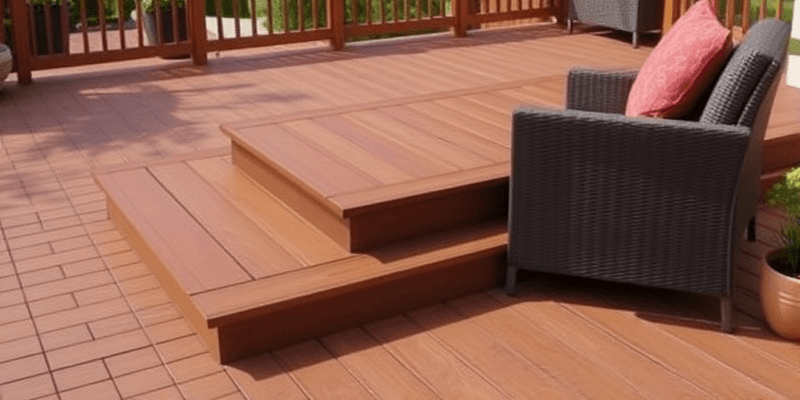Tips on Selecting and Purchasing Composite Decking Materials Locally
Introduction
Composite decking has become an increasingly popular choice for homeowners looking to enhance their outdoor spaces. Known for its durability, low maintenance, and aesthetic appeal, composite decking can offer a sustainable solution to traditional wood decking. Local options are often available, but navigating the selection and purchasing process can be challenging. In this article, we will provide key tips on how to choose and buy composite decking materials locally, focusing on essential quality indicators.
Understanding Composite Decking
Composite decking is composed of a mix of wood fibers and recycled plastic materials, designed to mimic the appearance of natural wood while avoiding many of its drawbacks. It is resistant to rot, splintering, and insect damage, making it an excellent long-term investment. However, not all composite decking is created equal, and consumers should be aware of the various qualities that differentiate one product from another.
Key Quality Indicators
1. Material Composition
It is vital to understand the materials used in composite decking. High-quality products typically contain a higher percentage of wood fibers for enhanced strength and aesthetics. Look for manufacturers that specify their material ratios, as a blend with at least 50% recycled content is generally considered superior.
2. Warranty
A good warranty often indicates the manufacturer’s confidence in their product. Most reputable brands offer warranties that last from 20 to 30 years. Pay close attention to the terms of the warranty, especially regarding fading, staining, and structural integrity.
3. Aesthetic Appeal
Composite decking is available in various colors and textures. Take your time to choose a finish that will complement your home’s exterior. Look for products that mimic the grain, color, and texture of natural wood. A good quality composite will have a multi-tonal appearance that enhances its realism.
4. Slip Resistance
Safety is paramount when selecting decking materials. Check for slip resistance ratings, especially if you live in an area prone to rain or snow. Many manufacturers conduct tests to ensure their products are safe, especially when wet.
5. UV Resistance
One of the common issues with outdoor materials is degradation from UV exposure. Quality composite decking products will include UV inhibitors to protect against fading and discoloration over time. Asking for samples that have been rated for UV resistance can help you assess which products will hold up best.
Where to Buy Composite Decking Locally
1. Home Improvement Stores
Large home improvement chains often stock a variety of composite decking brands. Visiting such stores allows you to see and touch the materials, offering a better sense of their quality and aesthetics. Furthermore, experienced staff members can provide valuable insights and comparisons between different brands.
2. Specialty Lumber Yards
Local lumber yards may carry different brands and types of composite decking products. They often have a more curated selection and are likely to offer products that have been thoroughly vetted for quality. It’s also a great chance to seek the opinions of staff who may have extensive knowledge in decking materials.
3. Local Manufacturers
Consider seeking out local manufacturers who produce composite decking. Purchasing locally can not only support your community but also provide you with options that have been designed for your region’s specific climate. Additionally, local companies may offer customized products not found in larger chains.
Consult Reviews and Recommendations
Before making a final purchase, take the time to read customer reviews and testimonials. Websites like [HomeAdvisor](https://www.homeadvisor.com/) and [Angie’s List](https://www.angieslist.com/) can provide insights into the experiences of other consumers. Pay attention to feedback related to durability, color retention, and customer service experiences.
Making Informed Decisions
Once you have narrowed down your options, visit the stores in person. Bring samples of your home’s colors, gather any relevant information, and ask questions. Comparison shopping is crucial—don’t hesitate to take notes or photographs to aid in your decision-making process.
Conclusion
Selecting and purchasing composite decking materials locally requires diligence and research. By focusing on quality indicators such as material composition, warranty, aesthetics, slip resistance, and UV resistance, you can make an informed choice that will serve your outdoor space well for years to come. Visit local stores, consult with knowledgeable staff, and consider the experiences of other customers to ensure you choose the best composite decking for your needs.
For more information, you may refer to [This Old House](https://www.thisoldhouse.com/) and [Consumer Reports](https://www.consumerreports.org/) for expert advice and comparisons on various decking materials.
By investing the time to research and select quality composite decking, you’re not just beautifying your home; you’re also making a long-term investment in its value and functionality.

